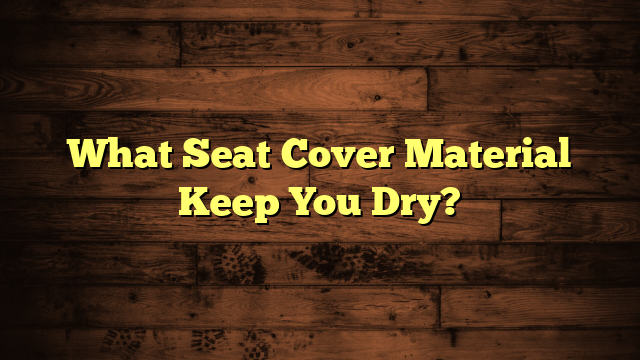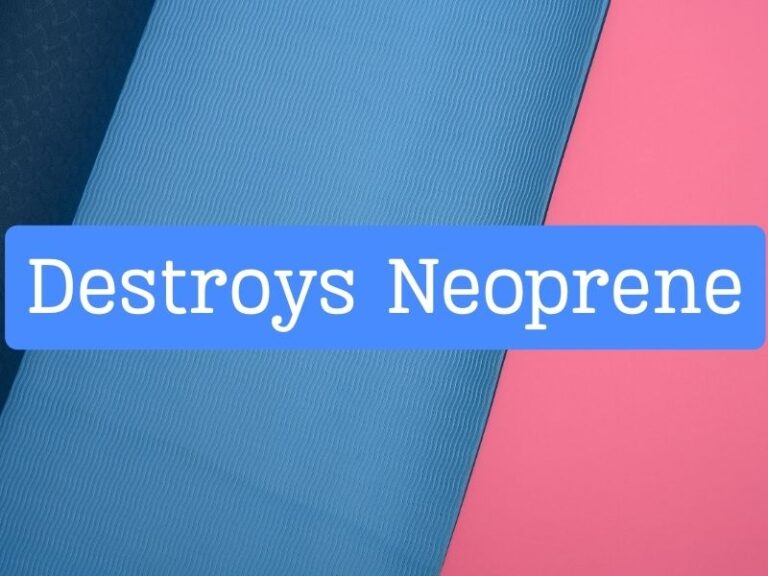How to Choose Car Seat Cover Material? Expert Tips and Tricks
To choose car seat cover material, consider durability, comfort, and ease of maintenance. A well-rounded Car seat cover not only protects your car’s interior but also enhances its comfort and aesthetic appeal.
However, with so many materials available, it can be overwhelming to choose the right one. When selecting car seat cover material, it is important to consider factors such as durability, comfort, and ease of maintenance. Understanding the different options available and their unique qualities will help you make an informed decision.
We will explore various car seat cover materials to help you choose the one that best suits your needs.
Importance Of Material Selection
The choice of car seat cover material is extremely important as it directly affects the comfort and overall experience while driving. Comfort during different weather conditions is a crucial aspect to consider when selecting the right material. With weather fluctuations, a material that provides optimal temperature control, such as breathable fabrics or moisture-wicking materials, can ensure a comfortable seating experience.
Durability is another key consideration. Ensuring that the material is resistant to wear and tear, stains, and fading is essential for long-lasting car seat covers. Additionally, the ease of maintenance and cleaning should not be overlooked. Opting for materials that are easy to clean or have stain-resistant properties can save time and effort in the long run.
Furthermore, the material chosen for car seat covers can also have an impact on the resale value of the car. High-quality materials that retain their appearance and functionality over time can enhance the overall value of the vehicle.
Assessing Material Types For Car Seat Covers
When choosing material for car seat covers, it’s important to understand the different options available. Two common choices are leather and fabric. Leather is a popular option due to its durability and easy maintenance. It provides a sleek and luxurious look to the interior of the car. Fabric, on the other hand, offers a wider range of colors and patterns, allowing for more customization options. It also tends to be more comfortable and breathable.
Aside from these traditional choices, there are also synthetic materials and hybrids available. Synthetic materials are often more affordable and can mimic the look and feel of leather or fabric. Hybrids combine different materials to provide the benefits of each.
For those seeking more specialized options, there are also eco-friendly materials that are made from recycled or sustainable sources. These options are great for those who prioritize environmental sustainability. Additionally, there are pet-friendly materials that are resistant to pet hair, scratches, and stains, making them ideal for pet owners.
Understanding Your Lifestyle Needs
Understanding your lifestyle needs is crucial when choosing a car seat cover material. Assessing your daily usage and the types of passengers you have will help you make the right decision.
Considering pets, children, and activity levels: If you have pets or children who frequently ride in your car, you’ll want a durable material that can withstand their activity levels. Look for materials that are resistant to scratches, stains, and spills.
Allergies and material sensitivity considerations: If you or your passengers have allergies or sensitivities to certain materials, be sure to choose a car seat cover material that is hypoallergenic and free from any potential irritants. Materials like neoprene, microfiber, or leather can be a good option.
Balancing Aesthetics And Functionality
When choosing a car seat cover material, it is important to find a balance between aesthetics and functionality. The color scheme and design of your car interior should be taken into consideration. Opt for a material that complements the overall look and feel of your vehicle. Additionally, consider the texture and feel of the material. It should be comfortable and provide a pleasant experience while driving.
Customization and personal style also play a significant role in choosing the right material. Look for options that allow you to customize and personalize your car seat covers according to your preferences. This will enable you to reflect your style and create a unique look for your car.
In conclusion, when selecting a car seat cover material, consider the color scheme and design, material textures and feel, as well as customization options. Taking these factors into account will help you choose a material that is both visually appealing and functional for your car seats.
Identifying High-quality Material Indicators
When choosing a car seat cover, it is important to consider a few key indicators of high-quality materials. One of these indicators is the thread count. A higher thread count signifies a denser weave, which makes the material more durable and resistant to wear and tear. Additionally, the material thickness is another important factor to consider.
Thicker materials tend to be more resistant to tears, stains, and water penetration, ensuring longevity and easy maintenance. UV protection is also crucial in preventing color fade caused by sun exposure. Look for car seat covers that offer UV protection to keep your covers looking vibrant and new for longer. By considering these indicators, you can choose a car seat cover material that is durable, stain-resistant, water-resistant, and provides protection against color fade.
Applying Smart Shopping Strategies
When choosing car seat cover material, it’s important to apply smart shopping strategies to ensure you make the best decision for your needs. Start by comparing prices and reading reviews of different options. Look for materials that are highly rated for their durability, comfort, and ease of cleaning. Pay attention to customer feedback regarding longevity and color fade.
Another important consideration is the warranty and return policy offered by the manufacturer or retailer. Ensure that you have a clear understanding of the terms and conditions in case you need to make a return or exchange. It’s always a good idea to check if the warranty covers any defects or damages to the seat cover material.
To further assess the suitability of a car seat cover material, testing samples for comfort and fit is recommended. This can be done either in-store or by ordering samples online. Pay attention to the texture, breathability, and overall feel of the material. Additionally, make sure that the cover fits snugly and securely over your car seat, providing adequate protection.
Installing Your New Car Seat Covers
When it comes to installing your new car seat covers, you have two options: DIY installation or professional service. Both have their pros and cons.
If you choose to install the car seat covers yourself, you will save money and have the satisfaction of doing it on your own. However, it can be time-consuming and requires some skill. On the other hand, hiring a professional service ensures a perfect fit and saves you time and effort. They have the expertise and tools to do the job effectively.
To ensure a snug and secure fit, it’s important to follow the manufacturer’s instructions carefully. Properly align the seat covers and secure them with straps, hooks, or clips as specified. Take your time and adjust the covers until they fit tightly on the seats, ensuring a neat and professional appearance.
| Tool/Accessory | Description |
|---|---|
| Screwdriver | To remove fasteners and panels if necessary |
| Trim Removal Tool | To safely remove trim pieces without damaging them |
| Hook/Clip Remover | To detach hooks and clips without causing any harm |
| Straps | To secure the seat covers in place |
By having these tools and accessories ready, you can simplify the installation process and achieve optimal results.
Maintaining Your Car Seat Covers
Choosing the right material for your car seat covers is crucial for both comfort and durability. When it comes to maintaining your car seat covers, regular cleaning is key. Follow these tips and tricks to keep your covers looking their best:
Regular cleaning tips and tricks:
- Regularly vacuum your car seat covers to remove any loose dirt or debris.
- For fabric covers, use a mild detergent and warm water to gently scrub away stains. Rinse thoroughly and allow to air dry.
- For leather or vinyl covers, use a leather cleaner or a mixture of mild soap and warm water. Wipe away any spills or stains, and avoid using harsh chemicals that could damage the material.
Spot treatment for common stains:
- For food or drink spills, blot the stain with a clean cloth or paper towel and then clean with an appropriate cleaner based on the seat cover material.
- For oil or grease stains, sprinkle baking soda or cornstarch on the affected area to absorb the excess. Clean as usual.
- For ink or pen marks, use a cotton swab dipped in rubbing alcohol to gently blot the stain. Be careful not to rub too hard, as it may damage the material.
Long-term care to prolong material lifespan:
- Avoid leaving your car seat covers exposed to direct sunlight for extended periods, as it can cause fading and cracking.
- Use seat covers designed to protect against spills, stains, and UV rays to maintain the original condition of your seats.
- Regularly apply a protectant or conditioner suitable for the material of your seat covers to keep the fabric or leather moisturized and prevent drying out or cracking.
Frequently Asked Questions Of How To Choose Car Seat Cover Material?
How To Choose The Right Car Seat Cover Material?
Choosing the right car seat cover material is crucial for comfort, durability, and style. Consider factors like climate, usage, and personal preference. Opt for materials like leather or neoprene for a sleek look and breathability. For everyday use, consider durable and easy-to-clean options like microfiber or polyester.
Conclusion
Choosing the right car seat cover material is a decision that shouldn’t be taken lightly. It is essential to consider factors such as durability, comfort, and ease of maintenance. Whether you opt for leather, fabric, vinyl, or neoprene, each material comes with its own advantages and disadvantages.
By understanding your priorities and making an informed choice, you can ensure that your car seats are both protected and stylish. Keep these tips in mind and enjoy the benefits of a well-chosen car seat cover material.
- Can I Get in a Taxi Without a Car Seat? - January 26, 2025
- Can I Get Chlamydia From a Toilet Seat? - January 26, 2025
- Can I Get an Uber With a Car Seat? - January 26, 2025






